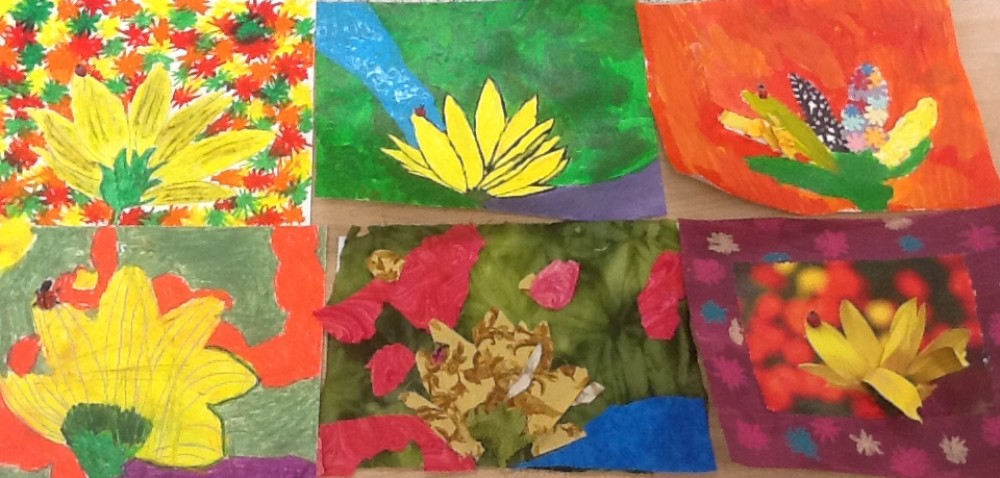What if we thought about assessment as the act of making an inference? What if we imagined that the learning we see in school is not all the learning that happens inside a student’s head? What if we thought about school as a place where we could structure experiences so students have the potential for learning above and beyond the learning they might do through living, playing and simply existing? What if we embraced the idea that capturing continuous acts of learning in all their complexity and diversity would make us better able to infer a student’s level of understanding? How can we make learning visible and then how can we turn this visible learning into a recursive dialogue that becomes the catalyst for future learning? These are some of the things I am thinking about today.
Imagine a suitcase. Imagine it is not your suitcase; it is, in fact, a suitcase belonging to someone you don’t know. Imagine opening this suitcase and taking out a single item – a bird-watching book. What might you think about the owner of the suitcase, based on this single item? Likes birds? Is planning on watching birds? Now, remove another item – a wide-brimmed hat. What now? Maybe the person is going bird-watching in a warm climate. Maybe they are fair and the sun bothers them. Maybe this person is a female? A third item – a map of Costa Rica. Now you are piecing together a story – this person is travelling to Costa Rica to go bird-watching and they are bringing the hat to protect them from the sun. You are making inferences based on artifacts in the suitcase. The more artifacts, the more robust your story becomes.
This act of piecing together a story, based on artifacts is the exact same inferring process we use when assessing students. We collect samples – papers, posters, oral presentations, problems, observations, and we use them to put together a story of student learning. The more samples, the more robust our inference about understanding. Sometimes we get it wrong – maybe the owner of the hat was a man. Maybe they borrowed the book for a friend and they don’t enjoy bird-watching. Similarly, maybe the student doesn’t understand a concept as well as we thought. Or maybe they understand it better. This is where we might need to accept that assessment facilitates making an inference but it isn’t fool-proof. This is why we might need to collect more evidence; change our opinion; replace old evidence with new.
Added to this idea of assessment as making an inference, is the notion that this metaphor should be more complex – someone is always adding to the suitcase as we unpack it. It continues to change and shift over time, just as learning continues over time. The contents of the suitcase today will not be the contents tomorrow. Learning today will not be learning tomorrow. So, we have to keep checking.
I think the whole act of making an inference gets easier when we also imagine that looking at the artifacts could go hand-in-hand with dialogue. Assessment doesn’t need to be one-way communication (take in the test and try to figure out what the student knows.) We need to feel comfortable asking questions. We need to embrace the idea that learning should be a conversation that continues all the time; in fact, it is through this conversation that learning continues to happen. Coming to know the owner of that suitcase is much easier when we can ask questions of the owner (Do you like bird-watching? Are you going somewhere hot?) And asking those questions is much easier when we have the samples/ artifacts right in front of us (What did you mean by this? How can you expand your thinking a little on this point? Where could you go to support your ideas further?) It is this conversation that is the crux of what we do in schools. Through conversations about learning, we know how to adjust, enhance and correct learning experiences so they take learning further.
It is essential for both teachers and students to capture learning as it unfolds. Portfolios, photographs, videos, reflections, observations, work samples, and rough drafts, are all ways of capturing learning and making it visible to both the teacher and the students. Settling for the single, final product is like accepting the bird-watching book as the entire story of the suitcase owner. It simply isn’t enough if we are going to make strong inferences about student learning.
It would be arrogant for anyone to believe they fully know what is inside another person’s head. And yet, teachers are tasked with measuring understanding and reporting it accurately. They also have to take the information they gather and adjust their instruction accordingly. Given these realities, making thinking visible is essential for teachers if they are to be effective assessors and facilitators of learning. Thinking about assessment as the act of making an inference helps us to think about how we can do this as effectively as possible. Because if we are going to return the suitcase to the correct owner, we had better figure out who the owner really is.
